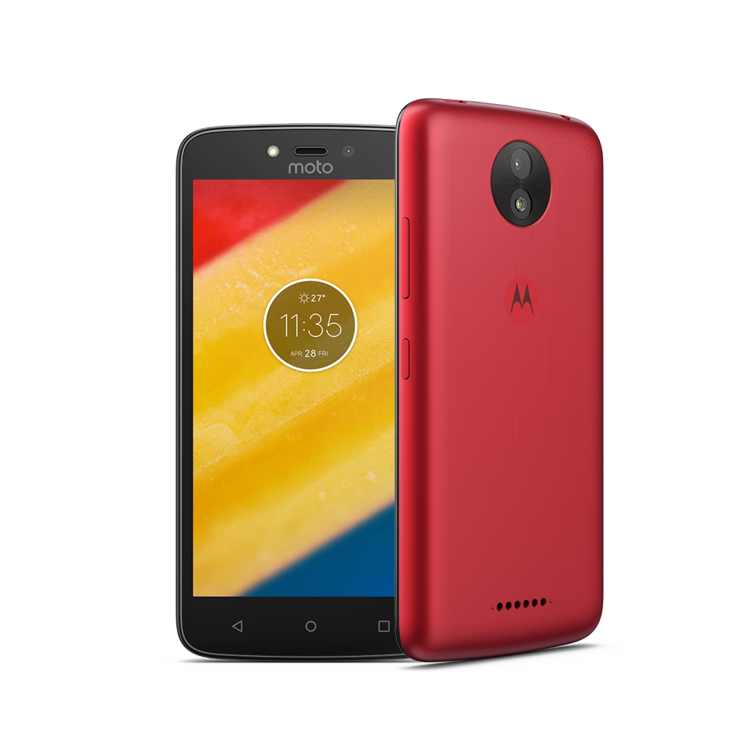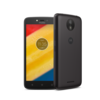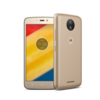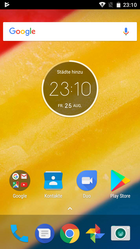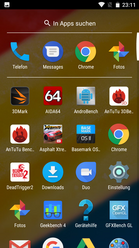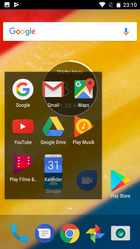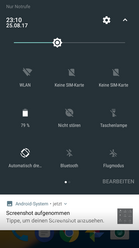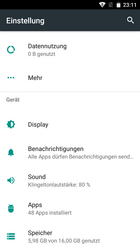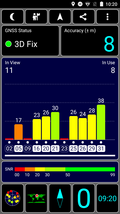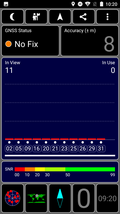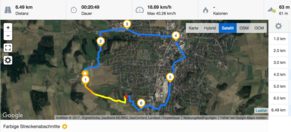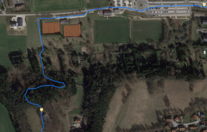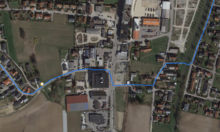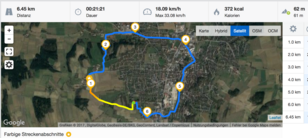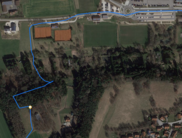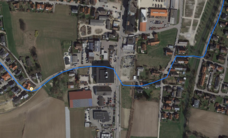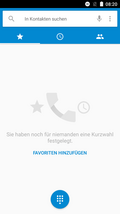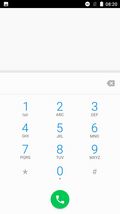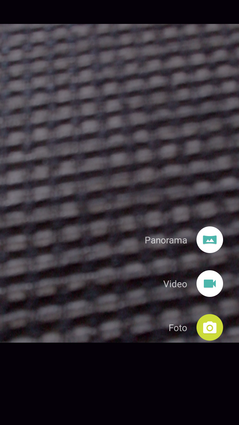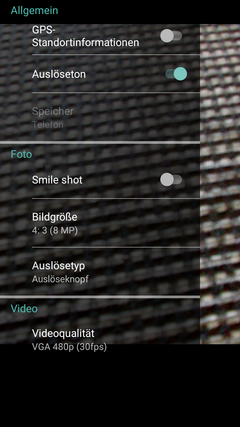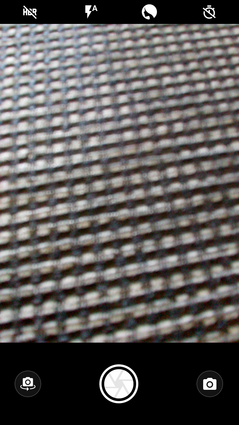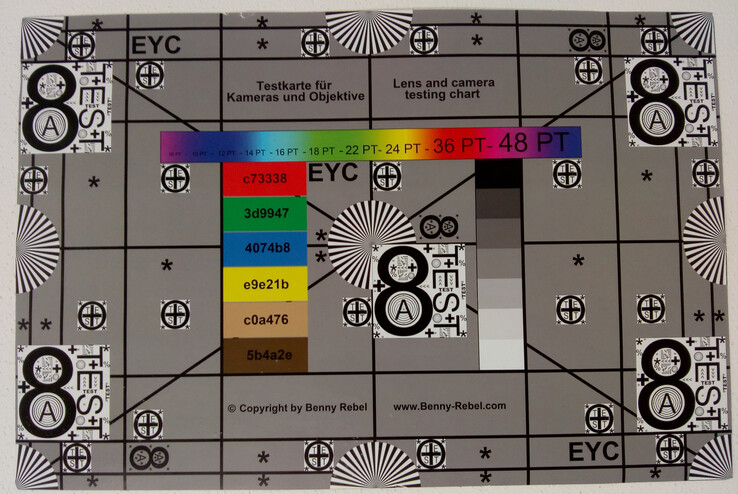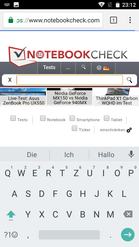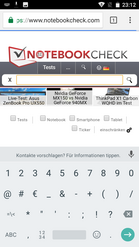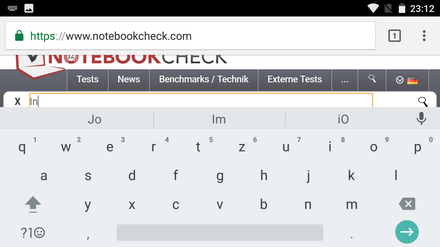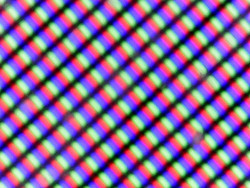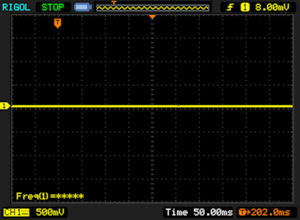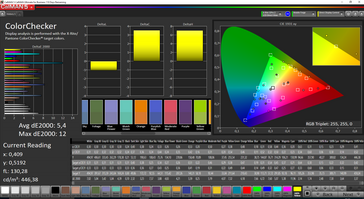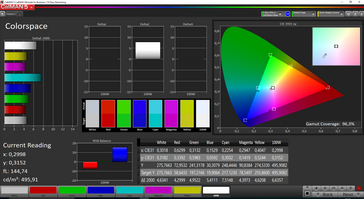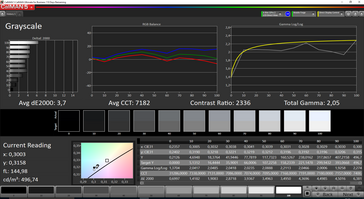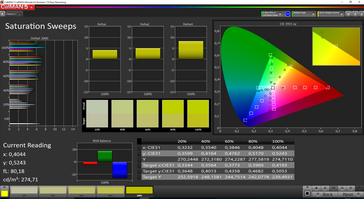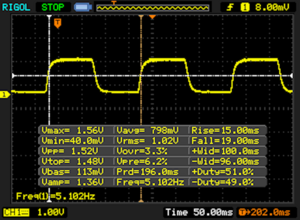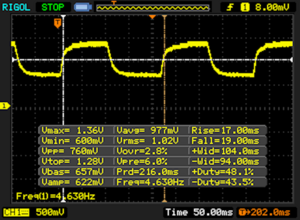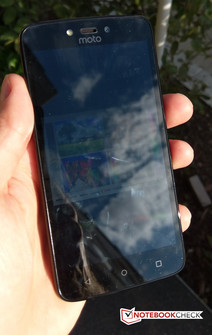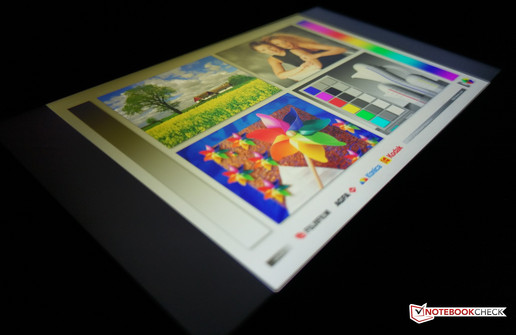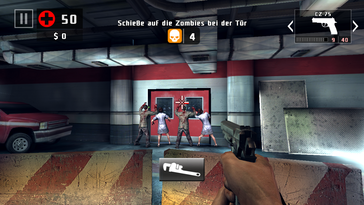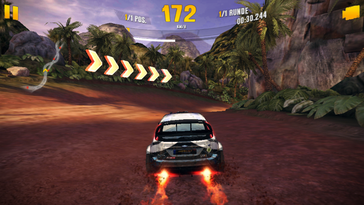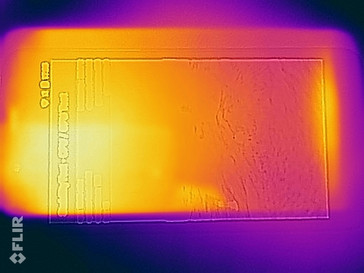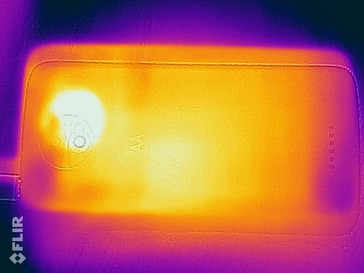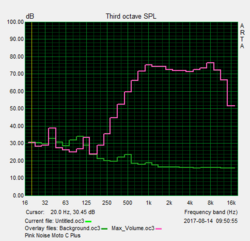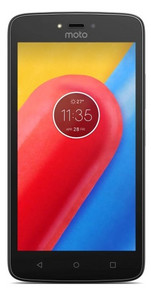Lenovo Moto C Plus Smartphone Review
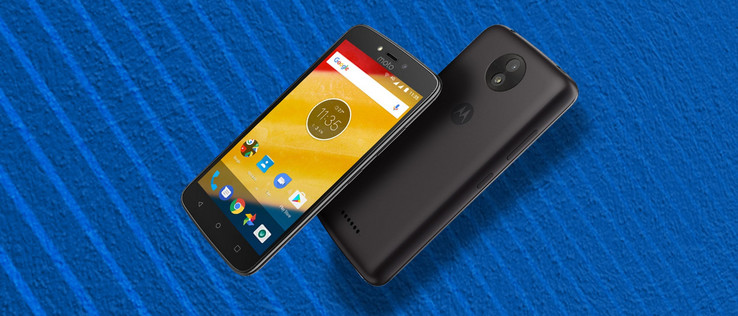
For the original German review, click here.
The new Moto C series from the Chinese manufacturer Lenovo is supposed to be particularly convincing in one area: its price. The recommended retail price of £140 (~$181, the device is not available in the US at the time of writing) puts the Moto C Plus, and also the Moto C, in the lower price range of entry-level smartphones.
Visually, there are only minimal differences between the two Moto C devices, and they are both equipped with the same MediaTek SoC, although the Moto C Plus has a clock rate of 1.3 GHz while the Moto C has only 1.1 GHz. This is accompanied by 1 GB of working memory and 16 GB of internal storage, which can be expanded via a microSD card.
One of the biggest differences between the two models is the choice of panel and resolution. Lenovo has chosen an IPS-based display for its Moto C Plus and a significantly higher resolution of 720p compared to the Moto C with FWVGA resolution (854x480). The exchangeable battery of the Moto C Plus can store almost double as much power with 4000 mAh as the Moto C with 2350 mAh.
The competitors of this entry-level smartphone are, among others, the Lenovo Moto G4 Play, the Gigaset GS170, the LG K8 2017 and the Nokia 3 as well as the cheaper Lenovo Moto C. There are also great entry-level devices imported from China, which often offer very good technical features. From these, we have chosen the UMI Max and the two Blackview devices P2 and R6 to be our comparison devices for this review.
Case
The front of the Moto C Plus is made of scratch-resistant glass which smoothly transitions to the plastic frame. The bezels around the IPS display are comparatively wide. The phone's dimensions are 122 x 73 mm (~4.8 x 2.8 in) while the display diagonal is 5 inches. This makes a display-to-surface ratio of only 64%. It is also 10 mm (~ 0.4 in) thick and feels a little chunky.
The volume rocker and on/off button are worked into the case nicely and are firmly in place. The surface of the removable plastic back cover is slightly roughened up. It does not feel cheap but is still a far cry from better materials such as glass or metal.
The back of the Moto C Plus hardly gives way under pressure and the case has very good stability.
Connectivity
The internal 16-GB eMMC storage offers sufficient space for personal data such as photos or music files. After subtracting the space needed for the operating system, the user is left with about 11 GB for free disposal. The storage of the dual-SIM smartphone can also be expanded via the microSD slot. In our test, the device even recognized our reference memory card with a capacity of 64 GB, although the manufacturer specifies a maximum of 32 GB.
The smartphone is recharged via a Micro-USB 2.0 port at the top of the device. Just like the Moto C, this device does not support USB OTG to connect external drives or devices. The wireless transfer of content to external screens worked well in our test with a Sony Android TV.
Software
The Moto C Plus is up-to-date technically as it is equipped with the current Android version 7.0 Nougat. Lenovo has added its own interface, although this is strongly reminiscent of stock Android in form and functionality. There are almost no changes to the system interface, but the device does offer some additional software features.
Communication & GPS
The Moto C Plus has Bluetooth 4.2 to take care of wireless communication with other mobile devices, but it is not equipped with an NFC chip for near field communication. Additionally, the smartphone supports the use of two nano-SIM cards - although Lenovo has stated that it supports Micro-SIM cards. Both slots are capable of LTE cat.4, which supports download rates of up to 150 MBit/s and upload rates of 50 MBit/s.
The integrated Wi-Fi module supports the IEEE 802.11 standards b/g/n and only transmits in the 2.4-GHz range. The Wi-Fi module's performance is good for everyday use and the signal is stable. The signal is limited to -31 dBm in close proximity to the router (Telekom Speedport, W921V). The data transfer rates to our reference router Linksys EA8500 are on the same level as the Moto C.
Mobile-positioning works via the GPS satellite navigation system. Outdoors, the device located us quickly within 8 meters. The signal was too weak to locate us indoors.
We measured the accuracy of the device's GPS by taking it on a 6-km (~3.72 miles) bike ride and compared its results to the professional navigation system Garmin Edge 500. At the end of our tour, there was only 40 meters (~43.7 yards) difference between the mid-range smartphone and the professional navigation system. This is a lot less than the difference the Moto C's GPS module measured and is a good result. The GPS module should be good enough for navigating in a car or on a bike.
Telephone & Voice Quality
We did our test call in the German Vodafone mobile network and the voice quality of the Moto C Plus was satisfactory in both directions, similar to the Moto C. Still, both we and our contact felt that the other was occasionally difficult to understand and the maximum volume of the earpiece is too low if you are in a noisy area.
The quality of the microphone was considered good during our telephone calls and there was no annoying background noise.
Cameras
The main 8-MP camera has an aperture of f/2.2 as well as auto-focus, although Lenovo states only fixed focus on its website. The CMOS image sensor takes photos with a resolution of 3264x2448 pixels in the 4:3 format and the pixel size is 1.14 micrometers. The maximum resolution the Lenovo smartphone can record videos in is HD (720p) with a frame rate of 30 images per second. If you use the 2-MP front camera for filming, the resolution reduces to VGA (480p), still at 30 fps.
The picture quality of the 8-MP camera is good considering the device's price and a little better than that of the Moto C. Dynamics are high, which means that pictures are light and have high contrast with good image sharpness. Despite auto-focus, the Moto C Plus (like the Moto C) is not suitable for macro photography or taking pictures in dark surroundings. In low light, the pictures have significant image noise and are not sharp.
The front camera has a resolution of 2 MP and an aperture of f/2.8. The picture quality is satisfactory for selfies but not better than the Moto C camera.
Accessories & Warranty
Apart from the modular 10-watt power supply (5V, 2A), the Moto C Plus also comes with a USB cable and the usual leaflets.
The warranty lasts for 24 months. Please see our Guarantees, Return policies and Warranties FAQ for country-specific information.
Input Devices & Handling
There are three unlit capacitive keys below the display that can be used to navigate. The capacitive touchscreen reacts precisely to inputs with up to five fingers. Inputs at the edges were registered just as precisely as in the middle. We preferred the responsiveness of the touchscreen to that of the Moto C's TFT display.
The virtual keyboard has nicely dimensioned keys; the layout is that of the stock Android design from Google.
Display
The LC display of the Moto C Plus has a resolution of 1280x720 pixels, which is equivalent to its competition. Content is displayed with a pixel density of 294 ppi and the 5-inch IPS panel is noticeably sharper than the FWVGA resolution (852x480) of the Moto C.
We measured luminosity in nine areas, which shows a slight decrease in brightness near the top and bottom edges of the display. Maximum brightness on an all-white screen is very good - 492 cd/m². Additionally, we tested brightness on a screen with evenly distributed light and black areas (APL 50). Here, we measured a brightness of 401 cd/m². The first generation of the Moto Cs does not offer an ambient light sensor to automatically adjust display brightness.
| |||||||||||||||||||||||||
Brightness Distribution: 90 %
Center on Battery: 492 cd/m²
Contrast: 2139:1 (Black: 0.23 cd/m²)
ΔE ColorChecker Calman: 5.4 | ∀{0.5-29.43 Ø4.77}
ΔE Greyscale Calman: 3.7 | ∀{0.09-98 Ø5}
96.3% sRGB (Calman 2D)
Gamma: 2.05
CCT: 7182 K
| Lenovo Moto C Plus IPS, 1280x720, 5" | Lenovo Moto C TFT, 854x480, 5" | Gigaset GS170 IPS, 1280x720, 5" | Nokia 3 IPS, 1280x720, 5" | LG K8 2017 IPS, 1280x720, 5" | Lenovo Moto G4 Play IPS, 1280x720, 5" | Blackview P2 IPS, 1920x1080, 5.5" | Blackview R6 IPS, 1920x1080, 5.5" | UMI Max IPS, 1920x1080, 5.5" | Samsung Galaxy S8 Super AMOLED, 2960x1440, 5.8" | |
|---|---|---|---|---|---|---|---|---|---|---|
| Screen | -64% | -65% | -27% | -45% | -29% | -50% | -52% | -21% | 27% | |
| Brightness middle (cd/m²) | 492 | 364 -26% | 418 -15% | 481 -2% | 358 -27% | 412 -16% | 424 -14% | 352 -28% | 522 6% | 566 15% |
| Brightness (cd/m²) | 472 | 355 -25% | 418 -11% | 469 -1% | 351 -26% | 414 -12% | 420 -11% | 320 -32% | 498 6% | 564 19% |
| Brightness Distribution (%) | 90 | 92 2% | 92 2% | 84 -7% | 93 3% | 94 4% | 85 -6% | 81 -10% | 86 -4% | 94 4% |
| Black Level * (cd/m²) | 0.23 | 0.31 -35% | 0.45 -96% | 0.22 4% | 0.49 -113% | 0.42 -83% | 0.15 35% | 0.3 -30% | 0.23 -0% | |
| Contrast (:1) | 2139 | 1174 -45% | 929 -57% | 2186 2% | 731 -66% | 981 -54% | 2827 32% | 1173 -45% | 2270 6% | |
| Colorchecker dE 2000 * | 5.4 | 10.4 -93% | 9.7 -80% | 8.1 -50% | 7.1 -31% | 5.6 -4% | 9.5 -76% | 8.7 -61% | 6.9 -28% | 2.7 50% |
| Colorchecker dE 2000 max. * | 12 | 18 -50% | 18.9 -58% | 15.4 -28% | 14.9 -24% | 9.7 19% | 19.7 -64% | 15.1 -26% | 12.3 -3% | 5.4 55% |
| Greyscale dE 2000 * | 3.7 | 12.7 -243% | 11.3 -205% | 8.5 -130% | 6.5 -76% | 6.9 -86% | 14.5 -292% | 10.5 -184% | 9.2 -149% | 3.1 16% |
| Gamma | 2.05 107% | 2.04 108% | 2.27 97% | 2.16 102% | 2.12 104% | 2.4 92% | 2.28 96% | 2.04 108% | 2.38 92% | 2.15 102% |
| CCT | 7182 91% | 12904 50% | 10414 62% | 9014 72% | 8166 80% | 8422 77% | 10840 60% | 8529 76% | 8687 75% | 6335 103% |
| Color Space (Percent of AdobeRGB 1998) (%) | 81.57 | |||||||||
| Color Space (Percent of sRGB) (%) | 99.87 |
* ... smaller is better
Screen Flickering / PWM (Pulse-Width Modulation)
| Screen flickering / PWM not detected | |||
In comparison: 53 % of all tested devices do not use PWM to dim the display. If PWM was detected, an average of 8081 (minimum: 5 - maximum: 343500) Hz was measured. | |||
The combination of luminosity and a black value of 0.23 cd/m² results in a very good contrast ratio of 1:2319. The realistic APL 50 test shows a high contrast (1:1823) and a minimally better black value (0.22 cd/m²).
We analyzed the display with a photospectrometer and the CalMAN software and received good results: the deviations from colorspace (5.4) and grayscales (3.7) were very low for this price range. The measured color temperature of 7182 K is very close to the ideal value of 6500 K and in practice we did not notice any color cast.
Overall, the IPS display in the Moto C Plus is a level above the Moto C's TFT panel.
Display Response Times
| ↔ Response Time Black to White | ||
|---|---|---|
| 34 ms ... rise ↗ and fall ↘ combined | ↗ 15 ms rise | |
| ↘ 19 ms fall | ||
| The screen shows slow response rates in our tests and will be unsatisfactory for gamers. In comparison, all tested devices range from 0.1 (minimum) to 240 (maximum) ms. » 90 % of all devices are better. This means that the measured response time is worse than the average of all tested devices (20.2 ms). | ||
| ↔ Response Time 50% Grey to 80% Grey | ||
| 36 ms ... rise ↗ and fall ↘ combined | ↗ 17 ms rise | |
| ↘ 19 ms fall | ||
| The screen shows slow response rates in our tests and will be unsatisfactory for gamers. In comparison, all tested devices range from 0.165 (minimum) to 636 (maximum) ms. » 49 % of all devices are better. This means that the measured response time is worse than the average of all tested devices (31.6 ms). | ||
The Lenovo smartphone remains decently readable even in bright surroundings thanks to its bright and high-contrast display. Even direct sunlight cannot entirely prevent us from reading the screen.
Thanks to IPS technology, the liquid crystal display has stable viewing angles. Colors do not distort even at a very wide viewing angle. The typical IPS glow effect - that dark surfaces appear brighter at very wide viewing angles - is there, but it is not particularly noticeable.
Performance
The MediaTek MT6737 is an entry-level ARM SoC (System-on-a-Chip). The 28-nm processor has four CPU cores based on the 64-bit Cortex A53 architecture with a maximum clock rate of 1.3 GHz in the Moto C Plus. The graphics unit is an ARM Mali-T720 MP2, which is integrated with the MediaTek SoC and can also be considered entry-level.
In combination with 1 GB of RAM, the Lenovo smartphone offers a slightly better system performance than the Moto C. However, the Plus version also has some stuttering and breaks, especially while multitasking. A slightly larger working memory would have been beneficial for multitasking capability and general performance.
The synthetic benchmarks showed that the Moto C Plus has 20% higher performance than the Moto C with an MT6737M. But compared to the performance of our comparison devices in the same price range, there would still have been room to improve, even for the Moto C Plus.
| AnTuTu v6 - Total Score (sort by value) | |
| Lenovo Moto C Plus | |
| Lenovo Moto C | |
| Gigaset GS170 | |
| Nokia 3 | |
| LG K8 2017 | |
| Lenovo Moto G4 Play | |
| Blackview P2 | |
| Blackview R6 | |
| UMI Max | |
| Samsung Galaxy S8 | |
| PCMark for Android | |
| Work performance score (sort by value) | |
| Lenovo Moto C Plus | |
| Lenovo Moto C | |
| Gigaset GS170 | |
| Nokia 3 | |
| LG K8 2017 | |
| Lenovo Moto G4 Play | |
| Blackview P2 | |
| Blackview R6 | |
| UMI Max | |
| Samsung Galaxy S8 | |
| Work 2.0 performance score (sort by value) | |
| Lenovo Moto C Plus | |
| Lenovo Moto C | |
| Gigaset GS170 | |
| Nokia 3 | |
| LG K8 2017 | |
| Blackview P2 | |
| Samsung Galaxy S8 | |
| Geekbench 4.4 | |
| 64 Bit Single-Core Score (sort by value) | |
| Lenovo Moto C Plus | |
| Lenovo Moto C | |
| Gigaset GS170 | |
| Nokia 3 | |
| LG K8 2017 | |
| Blackview P2 | |
| Samsung Galaxy S8 | |
| 64 Bit Multi-Core Score (sort by value) | |
| Lenovo Moto C Plus | |
| Lenovo Moto C | |
| Gigaset GS170 | |
| Nokia 3 | |
| LG K8 2017 | |
| Blackview P2 | |
| Samsung Galaxy S8 | |
| Compute RenderScript Score (sort by value) | |
| Nokia 3 | |
| LG K8 2017 | |
| Blackview P2 | |
| Samsung Galaxy S8 | |
| 3DMark | |
| 1280x720 offscreen Ice Storm Unlimited Score (sort by value) | |
| Lenovo Moto C Plus | |
| Lenovo Moto C | |
| Gigaset GS170 | |
| Nokia 3 | |
| LG K8 2017 | |
| Lenovo Moto G4 Play | |
| Blackview P2 | |
| Blackview R6 | |
| UMI Max | |
| Samsung Galaxy S8 | |
| 1280x720 offscreen Ice Storm Unlimited Graphics Score (sort by value) | |
| Lenovo Moto C Plus | |
| Lenovo Moto C | |
| Gigaset GS170 | |
| Nokia 3 | |
| LG K8 2017 | |
| Lenovo Moto G4 Play | |
| Blackview P2 | |
| Blackview R6 | |
| UMI Max | |
| Samsung Galaxy S8 | |
| 1280x720 offscreen Ice Storm Unlimited Physics (sort by value) | |
| Lenovo Moto C Plus | |
| Lenovo Moto C | |
| Gigaset GS170 | |
| Nokia 3 | |
| LG K8 2017 | |
| Lenovo Moto G4 Play | |
| Blackview P2 | |
| Blackview R6 | |
| UMI Max | |
| Samsung Galaxy S8 | |
| GFXBench (DX / GLBenchmark) 2.7 | |
| T-Rex Onscreen (sort by value) | |
| Lenovo Moto C Plus | |
| Lenovo Moto C | |
| Gigaset GS170 | |
| Nokia 3 | |
| LG K8 2017 | |
| Lenovo Moto G4 Play | |
| Blackview P2 | |
| Blackview R6 | |
| UMI Max | |
| Samsung Galaxy S8 | |
| 1920x1080 T-Rex Offscreen (sort by value) | |
| Lenovo Moto C Plus | |
| Lenovo Moto C | |
| Gigaset GS170 | |
| Nokia 3 | |
| LG K8 2017 | |
| Lenovo Moto G4 Play | |
| Blackview P2 | |
| Blackview R6 | |
| UMI Max | |
| Samsung Galaxy S8 | |
| GFXBench 3.0 | |
| on screen Manhattan Onscreen OGL (sort by value) | |
| Lenovo Moto C Plus | |
| Lenovo Moto C | |
| Gigaset GS170 | |
| Nokia 3 | |
| LG K8 2017 | |
| Lenovo Moto G4 Play | |
| Blackview P2 | |
| Blackview R6 | |
| UMI Max | |
| Samsung Galaxy S8 | |
| 1920x1080 1080p Manhattan Offscreen (sort by value) | |
| Lenovo Moto C Plus | |
| Lenovo Moto C | |
| Gigaset GS170 | |
| Nokia 3 | |
| LG K8 2017 | |
| Lenovo Moto G4 Play | |
| Blackview P2 | |
| Blackview R6 | |
| UMI Max | |
| Samsung Galaxy S8 | |
| GFXBench 3.1 | |
| on screen Manhattan ES 3.1 Onscreen (sort by value) | |
| Lenovo Moto C Plus | |
| Lenovo Moto C | |
| Gigaset GS170 | |
| Nokia 3 | |
| LG K8 2017 | |
| Blackview P2 | |
| Blackview R6 | |
| UMI Max | |
| Samsung Galaxy S8 | |
| 1920x1080 Manhattan ES 3.1 Offscreen (sort by value) | |
| Lenovo Moto C Plus | |
| Lenovo Moto C | |
| Gigaset GS170 | |
| Nokia 3 | |
| LG K8 2017 | |
| Blackview P2 | |
| Blackview R6 | |
| UMI Max | |
| Samsung Galaxy S8 | |
Surfing the web also works a little better on the preinstalled Chrome browser than with the Moto C. But you can still expect some delays when loading pages.
| JetStream 1.1 - Total Score | |
| Samsung Galaxy S8 (Samsung Browser 5.2) | |
| UMI Max (Chrome Version 54) | |
| Blackview R6 (Chrome 55) | |
| Blackview P2 (Chrome Version 58) | |
| LG K8 2017 (Chrome 57) | |
| Lenovo Moto G4 Play (Chrome 50.0.2661.89) | |
| Lenovo Moto C Plus (Chrome Version 60) | |
| Gigaset GS170 (Chrome Version 59) | |
| Nokia 3 (Chrome 59) | |
| Lenovo Moto C (Chrome Version 60) | |
| Octane V2 - Total Score | |
| Samsung Galaxy S8 (Samsung Browser 5.2) | |
| UMI Max (Chrome Version 54) | |
| Blackview R6 (Chrome 55) | |
| LG K8 2017 (Chrome 57) | |
| Blackview P2 (Chrome Version 58) | |
| Lenovo Moto G4 Play (Chrome 50.0.2661.89) | |
| Gigaset GS170 (Chrome Version 59) | |
| Nokia 3 (Chrome 59) | |
| Lenovo Moto C Plus (Chrome Version 60) | |
| Lenovo Moto C (Chrome Version 60) | |
| Mozilla Kraken 1.1 - Total | |
| Lenovo Moto C (Chrome Version 60) | |
| Nokia 3 (Chrome 59) | |
| Gigaset GS170 (Chrome Version 59) | |
| Lenovo Moto C Plus (Chrome Version 60) | |
| Blackview P2 (Chrome Version 58) | |
| Lenovo Moto G4 Play (Chrome 50.0.2661.89) | |
| Blackview R6 (Chrome 55) | |
| LG K8 2017 (Chrome 57) | |
| UMI Max (Chrome Version 54) | |
| Samsung Galaxy S8 (Samsung Browser 5.2) | |
* ... smaller is better
The measured read and write speeds of the internal eMMC storage and particularly for accessing the SD card are not very high for this price range. A comparison: Our reference card Toshiba Exceria Pro M501 supports a maximum access rate of 170 MB/s for reading and 150 MB/s for writing.
| Lenovo Moto C Plus | Lenovo Moto C | Gigaset GS170 | Nokia 3 | LG K8 2017 | Lenovo Moto G4 Play | Blackview P2 | Blackview R6 | UMI Max | Samsung Galaxy S8 | |
|---|---|---|---|---|---|---|---|---|---|---|
| AndroBench 3-5 | -5% | 42% | 129% | 186% | 137% | 77% | 23% | 59% | 339% | |
| Sequential Read 256KB (MB/s) | 186.7 | 179.3 -4% | 197.9 6% | 181 -3% | 270.8 45% | 144.1 -23% | 264.8 42% | 228 22% | 257.9 38% | 793 325% |
| Sequential Write 256KB (MB/s) | 44.45 | 44.55 0% | 44.79 1% | 34 -24% | 84.6 90% | 43.95 -1% | 133.8 201% | 76.1 71% | 69.5 56% | 193.2 335% |
| Random Read 4KB (MB/s) | 18.1 | 18.37 1% | 18.34 1% | 17.7 -2% | 41.6 130% | 17.9 -1% | 22.07 22% | 18.73 3% | 26.66 47% | 127.2 603% |
| Random Write 4KB (MB/s) | 15.4 | 10.9 -29% | 10.45 -32% | 5.5 -64% | 12.5 -19% | 28.31 84% | 9.54 -38% | 13.5 -12% | 10.91 -29% | 15.25 -1% |
| Sequential Read 256KB SDCard (MB/s) | 13.5 | 13.5 0% | 37.41 ? 177% | 64.3 376% | 78.6 ? 482% | 65.5 385% | 34.26 ? 154% | 22.74 ? 68% | 36.64 ? 171% | 63.9 ? 373% |
| Sequential Write 256KB SDCard (MB/s) | 10.7 | 10.7 0% | 21.34 ? 99% | 62.9 488% | 52.2 ? 388% | 51.1 378% | 19.61 ? 83% | 9.34 ? -13% | 18.07 ? 69% | 53.5 ? 400% |
Games
The ARM Mali-T720 MP2 is a graphics unit that has been available since 2014 and supports both OpenGL ES 3.1 and DirectX 11. Unlike the Mali-T720 in the Moto C, the GPU of the Plus version has two clusters that clock at a frequency of up to 650 MHz.
Current games from the PlayStore can be played with the Lenovo smartphone. The first-person shooter Dead Trigger 2 and the racing game Asphalt 8: Airborne are displayed smoothly with 30 to 31 fps in minimum settings by devices with similar performance (SoC).
There are no difficulties controlling the Moto C Plus thanks to the well-functioning sensors and satisfyingly precise display.
Emissions
Temperature
(+) The maximum temperature on the upper side is 32.6 °C / 91 F, compared to the average of 35.2 °C / 95 F, ranging from 21.9 to 247 °C for the class Smartphone.
(+) The bottom heats up to a maximum of 29.2 °C / 85 F, compared to the average of 34 °C / 93 F
(+) In idle usage, the average temperature for the upper side is 29.7 °C / 85 F, compared to the device average of 32.9 °C / 91 F.
Speakers
The Moto C Plus has a mono speaker positioned on the back of the device. Considering its size, the sound body produces a satisfactory sound quality. The sound is a little tinny and distorted at maximum volume (85 dB(A)). Low bass frequencies are not audible, but mids and highs are rather linear from 1 kHz.
The Moto C Plus has an audio jack, so it can easily be connected with conventional headphones, should you require better sound quality.
Lenovo Moto C Plus audio analysis
(+) | speakers can play relatively loud (84.8 dB)
Bass 100 - 315 Hz
(-) | nearly no bass - on average 39.1% lower than median
(±) | linearity of bass is average (12.1% delta to prev. frequency)
Mids 400 - 2000 Hz
(±) | reduced mids - on average 5.9% lower than median
(±) | linearity of mids is average (7.7% delta to prev. frequency)
Highs 2 - 16 kHz
(+) | balanced highs - only 1.5% away from median
(+) | highs are linear (2.9% delta to prev. frequency)
Overall 100 - 16.000 Hz
(±) | linearity of overall sound is average (25.4% difference to median)
Compared to same class
» 63% of all tested devices in this class were better, 7% similar, 30% worse
» The best had a delta of 11%, average was 35%, worst was 134%
Compared to all devices tested
» 77% of all tested devices were better, 5% similar, 18% worse
» The best had a delta of 4%, average was 24%, worst was 134%
Gigaset GS170 audio analysis
(+) | speakers can play relatively loud (84.4 dB)
Bass 100 - 315 Hz
(-) | nearly no bass - on average 40.3% lower than median
(+) | bass is linear (5.9% delta to prev. frequency)
Mids 400 - 2000 Hz
(±) | reduced mids - on average 9.1% lower than median
(±) | linearity of mids is average (11.5% delta to prev. frequency)
Highs 2 - 16 kHz
(±) | higher highs - on average 5.6% higher than median
(+) | highs are linear (2.1% delta to prev. frequency)
Overall 100 - 16.000 Hz
(-) | overall sound is not linear (31.4% difference to median)
Compared to same class
» 81% of all tested devices in this class were better, 3% similar, 16% worse
» The best had a delta of 11%, average was 35%, worst was 134%
Compared to all devices tested
» 90% of all tested devices were better, 2% similar, 8% worse
» The best had a delta of 4%, average was 24%, worst was 134%
LG K8 2017 audio analysis
(+) | speakers can play relatively loud (85.6 dB)
Bass 100 - 315 Hz
(-) | nearly no bass - on average 38.8% lower than median
(+) | bass is linear (3% delta to prev. frequency)
Mids 400 - 2000 Hz
(±) | reduced mids - on average 13.2% lower than median
(±) | linearity of mids is average (14.1% delta to prev. frequency)
Highs 2 - 16 kHz
(±) | higher highs - on average 5.1% higher than median
(+) | highs are linear (3.5% delta to prev. frequency)
Overall 100 - 16.000 Hz
(-) | overall sound is not linear (34.9% difference to median)
Compared to same class
» 85% of all tested devices in this class were better, 1% similar, 14% worse
» The best had a delta of 11%, average was 35%, worst was 134%
Compared to all devices tested
» 93% of all tested devices were better, 1% similar, 6% worse
» The best had a delta of 4%, average was 24%, worst was 134%
Frequency diagram in comparison (checkboxes can be turned on/off!)
Battery Runtime
Power Consumption
Power consumption while idling and at the lowest brightness level with flight mode activated is rather high. However, at full brightness and under load (stability test CPU + GPU) with activated communication modules, consumption is only minimally higher at 2.2 watts. The Moto C Plus consumes a lot less power than its competition under load.
| Off / Standby | |
| Idle | |
| Load |
|
Key:
min: | |
| Lenovo Moto C Plus 4000 mAh | Lenovo Moto C 2350 mAh | Gigaset GS170 2500 mAh | Nokia 3 2630 mAh | LG K8 2017 2500 mAh | Lenovo Moto G4 Play 2800 mAh | Blackview P2 6000 mAh | Blackview R6 3000 mAh | UMI Max 4000 mAh | Samsung Galaxy S8 3000 mAh | |
|---|---|---|---|---|---|---|---|---|---|---|
| Power Consumption | -1% | 3% | -2% | -3% | -36% | -66% | -2% | -10% | ||
| Idle Minimum * (Watt) | 0.8 | 0.54 32% | 0.67 16% | 0.65 19% | 0.68 15% | 0.99 -24% | 0.78 2% | 1.02 -28% | 0.78 2% | |
| Idle Average * (Watt) | 1.87 | 1.56 17% | 1.35 28% | 1.6 14% | 1.58 16% | 2.04 -9% | 1.63 13% | 1.53 18% | 1.1 41% | |
| Idle Maximum * (Watt) | 1.89 | 1.6 15% | 1.39 26% | 1.62 14% | 1.61 15% | 2.12 -12% | 1.84 3% | 1.62 14% | 1.16 39% | |
| Load Average * (Watt) | 2.18 | 3.18 -46% | 3.1 -42% | 2.97 -36% | 3.36 -54% | 3.77 -73% | 7.47 -243% | 2.91 -33% | 4.15 -90% | |
| Load Maximum * (Watt) | 3.61 | 4.42 -22% | 4.02 -11% | 4.34 -20% | 3.91 -8% | 5.78 -60% | 7.47 -107% | 2.93 19% | 5.12 -42% |
* ... smaller is better
Battery Runtime
The lithium-ion polymer battery is removable and has 4000 mAh. In our practical Wi-Fi test, the entry-level device is clearly ahead of its competition with a runtime of 14 hours and 18 minutes. Only the Blackview P2 could beat this runtime, but then it is equipped with a 6000 mAh battery.
| Lenovo Moto C Plus 4000 mAh | Lenovo Moto C 2350 mAh | Gigaset GS170 2500 mAh | Nokia 3 2630 mAh | LG K8 2017 2500 mAh | Lenovo Moto G4 Play 2800 mAh | Blackview P2 6000 mAh | Blackview R6 3000 mAh | UMI Max 4000 mAh | Samsung Galaxy S8 3000 mAh | |
|---|---|---|---|---|---|---|---|---|---|---|
| Battery runtime | ||||||||||
| WiFi v1.3 (h) | 14.3 | 8.6 -40% | 7.4 -48% | 9.2 -36% | 9.9 -31% | 10.5 -27% | 18.1 27% | 10.1 -29% | 9.8 -31% | 12 -16% |
Pros
Cons
Verdict
Compared to the Moto C, Lenovo has made the right adjustments to the Moto C Plus. It is a level above its 5-inch counterpart without the additional "Plus". System and browser performance have also improved a little thanks to the higher-clocking MediaTek SoC.
But considering its price, the Moto C Plus still does not offer a great performance package of CPU, GPU and storage access rates. However, the entry-level smartphone can score some points with its very long battery runtimes, decent camera and up-to-date Android 7.0. The 720-p IPS panel has high luminosity, a good contrast ratio and good color display.
Lenovo has made it quite easy for potential buyers to choose between the two Moto models. Due to the minimal difference in price, the Plus version is definitely the right choice.
Lenovo Moto C Plus
- 08/29/2017 v6 (old)
Marcus Herbrich


